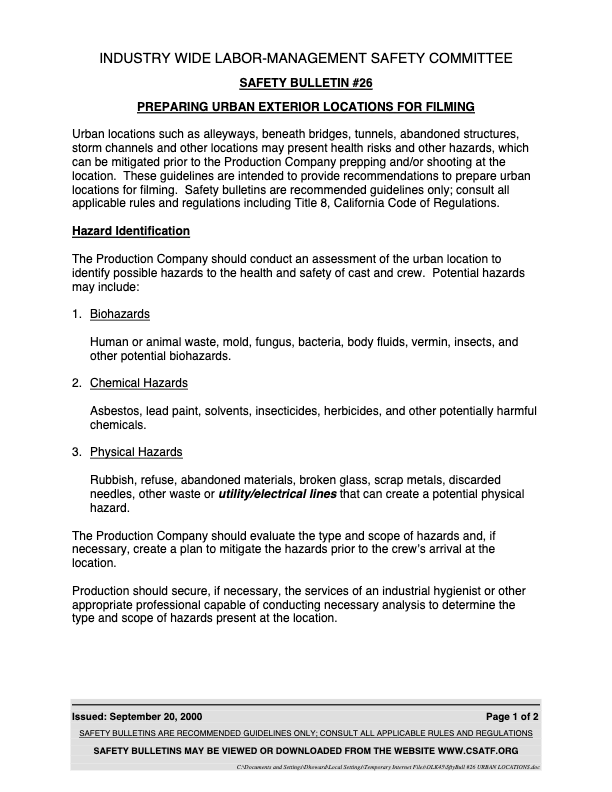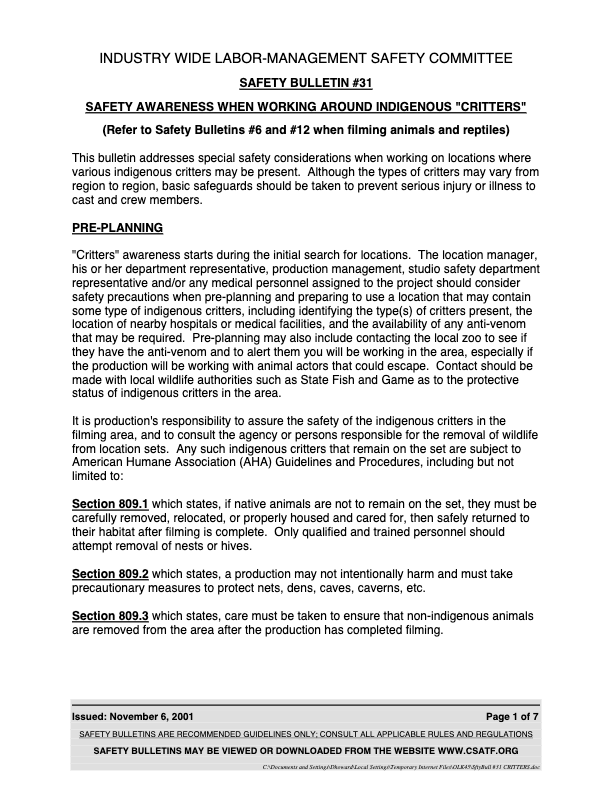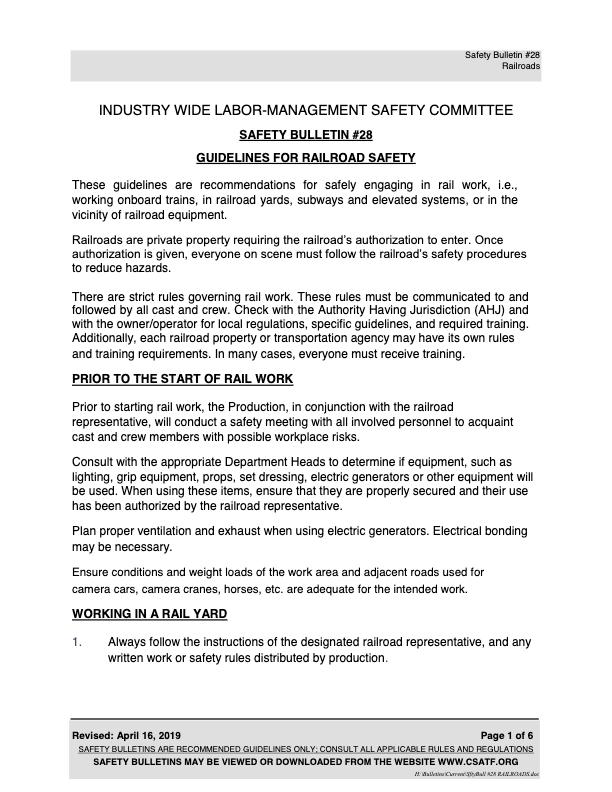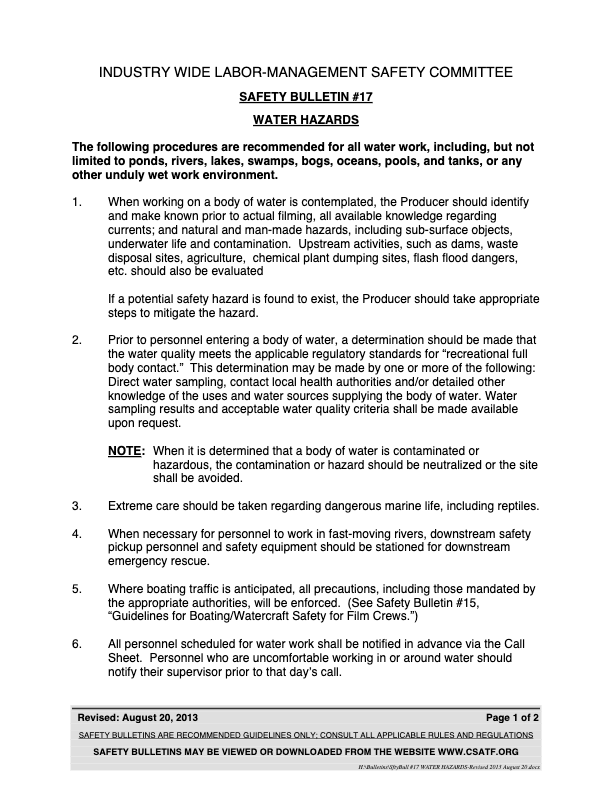Safety Bulletin

Guidelines
Urban locations such as alleyways, beneath bridges, tunnels, abandoned structures, storm channels and other locations may present health risks and other hazards, which can be mitigated prior to the Production Company prepping and/or shooting at the location. These guidelines are intended to provide recommendations to prepare urban locations for filming.
Hazard Identification
The Production Company should conduct an assessment of the urban location to identify possible hazards to the health and safety of cast and crew. Potential hazards may include:
- Biohazards: Human or animal waste, mold, fungus, bacteria, body fluids, vermin, insects, and other potential biohazards.
- Chemical Hazards: Asbestos, lead paint, solvents, insecticides, herbicides, and other potentially harmful chemicals.
- Physical Hazards: Rubbish, refuse, abandoned materials, broken glass, scrap metals, discarded needles, other waste or utility/electrical lines that can create a potential physical hazard.
The Production Company should evaluate the type and scope of hazards and, if necessary, create a plan to mitigate the hazards prior to the crew’s arrival at the location.
Production should secure, if necessary, the services of an industrial hygienist or other appropriate professional capable of conducting necessary analysis to determine the type and scope of hazards present at the location.
Physical Mitigation
The Production Company should take necessary steps to minimize exposure of cast and crew to the aforementioned hazards. Such steps may include, but are not limited to, power washing, steam cleaning, removal of refuse and rubbish, fumigation, and use of chemical disinfectant(s). Because of the nature of such locations, production should consider securing the location during and after mitigation procedures.
In some cases, the type and/or scope of hazards present at the urban location may necessitate the use of a licensed contractor certified in the proper handling and removal of the offending substances and materials.
Electrical cables, props, and other equipment used at the location should be protected where practical. Cables should be supported off the ground whenever possible.
Protective ground cover, such as layout board or other material, should be positioned in work areas to minimize contact with potentially affected areas. Props and equipment that come in contact with the ground should be disinfected. Washing facilities should be available for the cast and crew – who should be reminded to wash periodically and before meals. Long pants, long sleeved shirts, and hard-soled shoes are recommended to minimize contact. Proper personal protective equipment should be provided and used.
Location Maintenance
If possible, the urban location should be locked-off and secured to maintain the cleanliness of the set. If that is not practical, Production should conduct daily cleaning activities before crew call to remove any sources of exposure or hazards that accumulated during the Production Company’s absence.
Additional Concerns
Some mitigation procedures may cause objections from local authorities or the community. The Production Company should first check with local agencies to insure that their preparation activities do not violate local ordinances.




